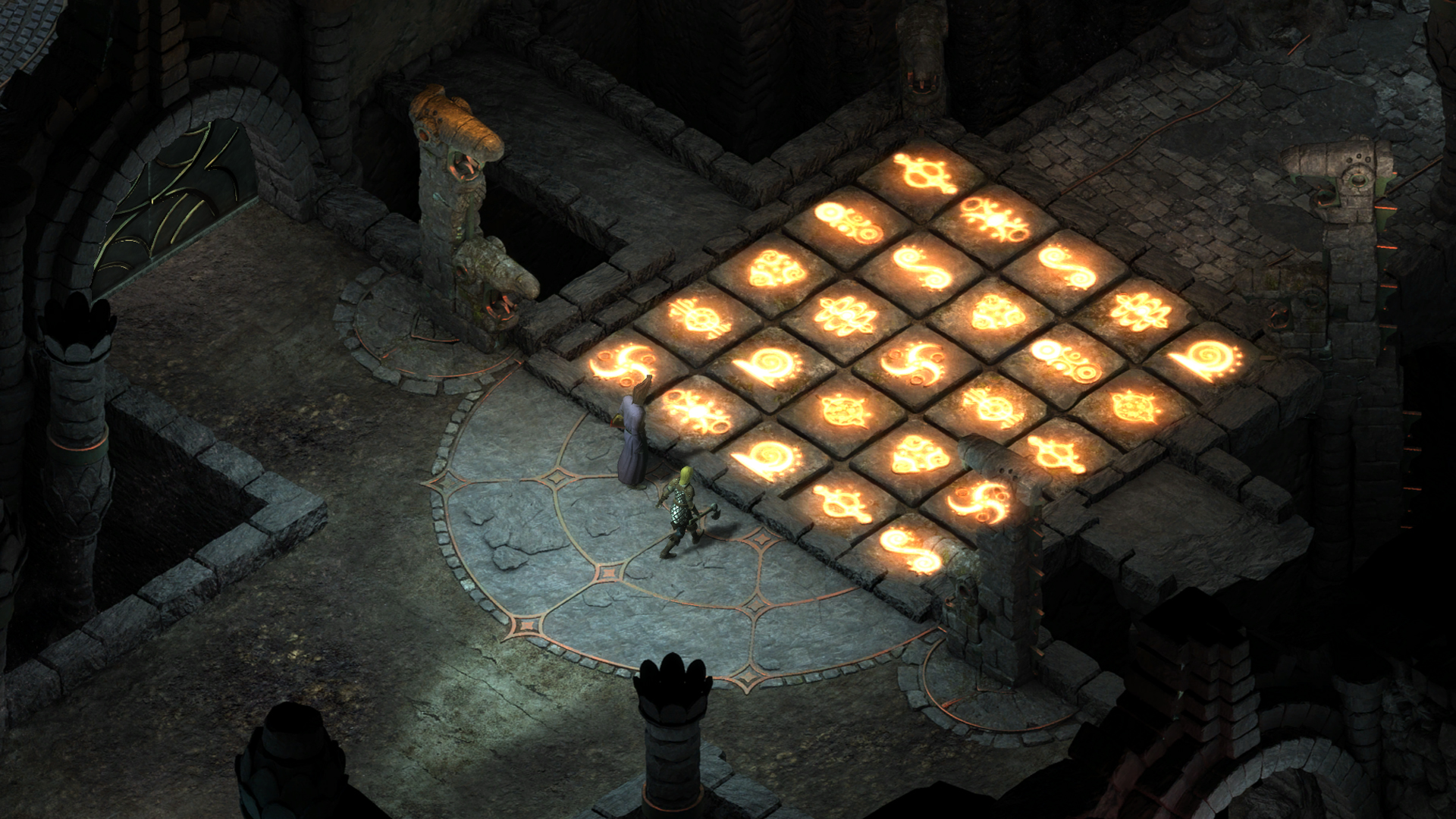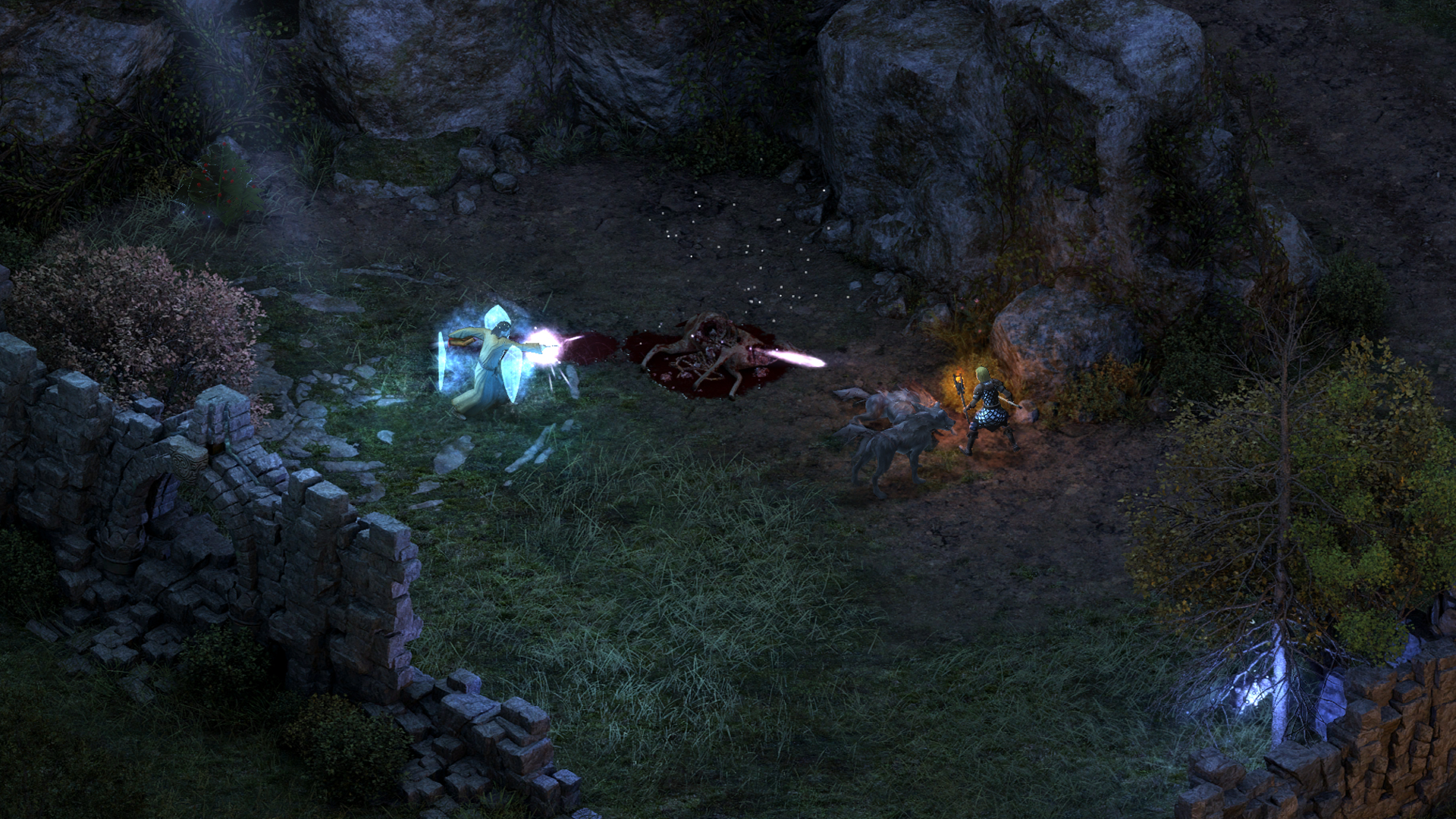With Pillars of Eternity, Obsidian Entertainment has taken a classic game format and refined it with the grace of hindsight.
At a recent event in San Francisco, the developers of the crowdfunded game Pillars of Eternity ran through the same demo that they had brought to E3. But this time they brought a barbarian instead of a mage, showing off the different choices that this made available.
They started by showing off the game's deep character creation, beginning with the game's six races, three regional differences per race, a large host of player classes that ranged from standard Fighters and Mages, to newer classes like Ciphers, individual stats, and cultural backgrounds. The degree of visual customization was amazing, especially for a character who ultimately will be about three inches tall, at most, on most screens.
Though Pillars is intended as a continuation of the old Infinity engine games, particularly D&D brands like Icewind Dale and Baldur's Gate, they wanted to avoid some of the pitfalls of D&D, including character creation issues like dump-stats. Dump-stats are stats in D&D and other table-top role-playing games that are unimportant to a character class, so players remove points from them and put them elsewhere to boost their character abilities.
In Pillars of Eternity every stat is important, regardless of the character class. When creating their Barbarian character for this demo, for instance, I noted the character's high intelligence—traditionally a dump stat for the class. This, it turned out, was because for The Barbarian, a high Intelligence raises the likelihood to do splash damage to nearby enemies when attacking or to increase area-of-effect abilities. Conan of Cimmeria would certainly agree with this design choice (after he had destroyed the computer as a sorcerous example of civilization, of course). Other traditional dump-stats like Perception grant higher interrupt instances on attack and Resolve decreases interrupts against the player.
Starting in a caravan, with more time to run through the demo than at E3, the devs quickly ran over to a trader and bought a few items to augment their initial loadout (which is determined by the class, race, and region they pick at the beginning) before going on an initial quest to get some water. This doesn't end smoothly, as a soul-storm, a burst of energy that steals the souls from living and dead inhabitants of the planet, interrupts the quest after the caravan is ambushed.

While running, one of the player companions is grappled by an enemy in a scripted event. By "scripted event," I don't mean a scripted cinematic, but actual text describing the encounter, with a character choice for what to do next. When playing through the first time at E3, since the player character was a mage, he could blast the enemy away with a burst of magic. Since the player was choosing to play as a barbarian in the second playthrough, he could throw one of his weapons, freeing the companion. However, after the scripted event ended, that weapon was gone and could no longer be used in combat.
Escaping from the storm, the player and his two companions, escape into a cave, encountering slime-like enemies, puzzles, and other dungeon crawly goodness. Though Obsidian has done a lot to smooth out the rough edges that D&D creates for non-native gamers—removing D&D specific tropes like monster immunities that players are expected to know, and multiple "dice rolls" where only one is necessary, simplifying stat effects—the game still feels much like a tabletop gaming experience.
When I asked about it, I was shown first the game's Combat Log—combat plays out similar to Knights of the Old Republic, where characters will automatically attack, but attack choices can be set during a pause state—which included the individual values for attacks and damage. However, more fascinating was that during an enemy encounter, you could pause and click on an enemy, seeing all the values for the player's attack base value, its virtual dice-roll, and the enemy stats that player was fighting against. Because of this, once an enemy had been attacked, the player could check those stats, then see where the enemy's strength and weaknesses were, and change his or her attack style based on those attributes.
Of the challenges the game made for the development team, one was getting back into writing a game for people who like to read. Having worked in the triple-A space, they had to get used to not just writing dialogue, but also the description; certain scripted events read like the best of tabletop role-playing game flavor-text but with active choices by the player changing how the plot plays out. Because they expect their audience to enjoy reading the story and paying attention to the dialogue, Pillars of Eternity has no waypoint system. The player is expected to read the quest objectives and find them based on what they are told in the game, rather than following an all-too-easy guide marker on a map.
Another big challenge was what they called the "Scooby Doo" effect; that is, the difficulty of having objects in the environment that become interactive during gameplay, but need to fade into the background beforehand so as not to give away that something is going to happen. In animation, like Scooby Doo, this is sometimes a problem where an audience member can tell where the scare is coming from, because an object in view is clearly handdrawn and not a part of the background. Obsidian did work with shaders and effects to get these elements to mix into the environment carefully.

They showed me two new environments, one a city on one side of Defiance Bay called Ondras Gift, named for half the city surviving a giant tidal wave after giving praise to the Goddess Ondra, who is believed to have spared it. Ondras Gift is so large that just exploring—without taking quests—will take about ten minutes. Details like this speak to the depth of the lore, as well as the other reason it took Obsidian time to get back into the groove of developing the game, specifically the 2D map the characters roamed across. They are determined to avoid a few problems encountered in Icewind Dale's design, with frustratingly narrow portions of maps became hard to navigate.
The other city was Anslog's Compass, a vast, ripe plains area, without a specific quest, allowing the player to reap the benefit of exploration. Here the plains were filled with Xaurips (the game's version of kobolds) and Drake skulls graveyards, and it was here that they showed me the Combat Log. Both areas were gorgeous examples of isometric environment building, which was another challenge for the Obsidian staff who had been working in 3D environments, wanting to avoid some of the pitfalls of having made some of the character passageways too thin in some of the Infinity Engine classics.
With Pillars of Eternity, Obsidian doesn't just aim to invoke the Infinity Engine games. It's clearly set on improving the model and implementation of the format. In almost every respect, they've taken what people love about these games and highlighted those features, while minimizing what doesn't make sense, or was necessitated by the brand. Pillars of Eternity is currently in Beta, and is set to be released in Winter of this year on PC, Mac, and Linux on Steam, though it can still be backed on their website for $35.







